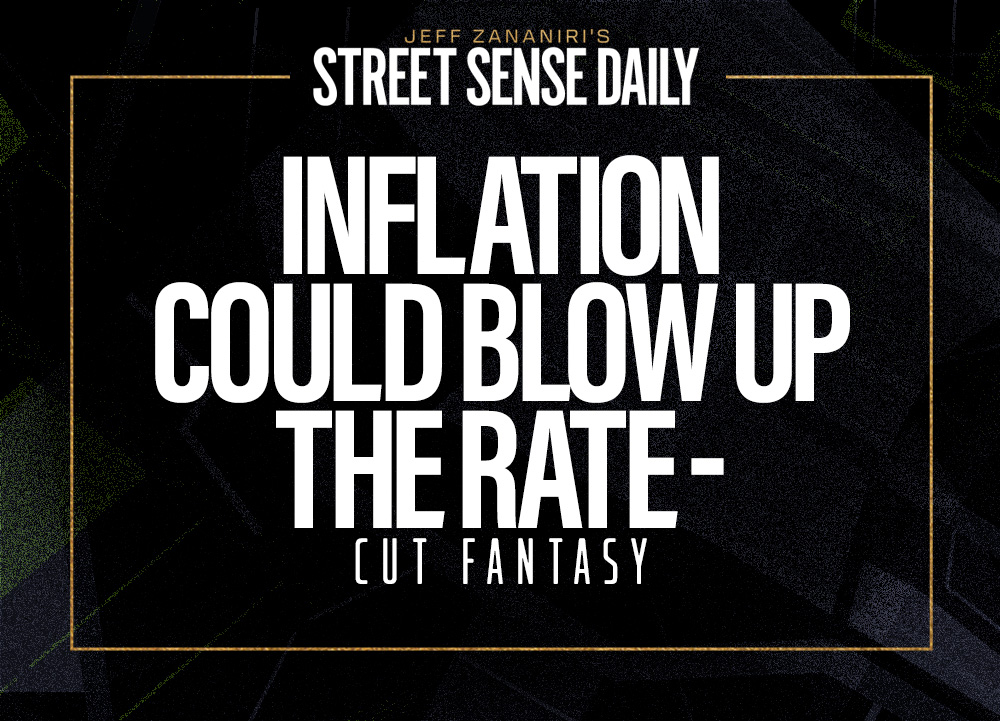There’s been plenty of talk lately about “jumbo cuts” to the federal funds rate, and it’s starting to feel like a game of telephone.
One person says, “rate cut,” the next goes, “half-point cut,” and suddenly the market starts pricing in some kind of Federal Reserve fire sale.
Let’s be clear: Cuts are on the table.
But the idea that Fed Chair Powell’s going to walk into the room next Wednesday with a sharp pair of giant shears is a bit of a stretch.
There’s a real disconnect right now between market expectations and what the Fed has actually signaled.
The fed funds futures market is flirting with the idea of not just one cut this year but possibly two. And now, with some of the more aggressive analysts throwing out the term “jumbo cut,” it’s time to slow down and take a breath.
Yes, jobs data is softening. Revisions are a wrecking ball to previous optimism.
We’ve now seen several downward revisions to payrolls — and that’s not just noise. It’s a pattern.
And if you’re a trader, you know patterns don’t get ignored.
But let’s not forget the one thing that truly keeps Powell up at night, and that’s inflation.
This week we’ll get PPI (Wednesday) and the CPI (Thursday) numbers.
These two reports are the last major data points before the Fed’s rate decision.
If they come in hot — or even sticky — all that rate cut hope gets pushed back on the calendar, fast. And any talk of a “jumbo” move is gone before it even had legs.
Now, if PPI and CPI both come in cooler than expected, then we’ve got something to work with.
That could confirm what the bond market’s been sniffing out — a slowing economy with inflation finally cooling at a pace the Fed can stomach.
In that case, you may see Powell bless a September cut … maybe even two before year-end.
But that’s still a big if.
From a trader’s lens, here’s where it gets even more interesting.
Margin for Error
The S&P has been pricing in perfection.
You’ve got tech leading the charge, AI stocks frothing again, and the VIX a little above 15 as of this writing, like there’s zero risk left in the world.
But anyone who’s been around the block knows when things look too good, they usually aren’t.
This is exactly the kind of setup that leads to whiplash.
If CPI prints hot Thursday morning, the entire rate cut narrative could get blown up.
Yields pop, tech takes a hit, and traders who loaded the boat on call spreads chasing new highs are going to be scrambling.
Now, that doesn’t mean you sit on your hands; it just means you stay nimble and pick your spots.
Here’s how I’m thinking about it right now:
- If CPI and PPI come in cool: I’ll be looking for short-dated bullish exposure in sectors that benefit from lower rates — think small caps and homebuilders. They’ve lagged the AI-heavy stuff, so there’s room to run.
- If inflation surprises to the upside: I’ll rotate into downside hedges, maybe look at bear put spreads on the Nasdaq. Tech is still where the air is thinnest. Also wouldn’t mind picking up some volatility exposure — the VIX is cheap, and that won’t last forever.
- If the Fed stays put and talks tough next week: Watch the bond market. Long-duration Treasuries could take a hit, and that might bleed into equities fast. I’d lighten up on high-beta names and lean defensive until the dust settles.
Keep Your Cool
Bottom line: Don’t fall for the headlines.
“Jumbo cuts” sound exciting, but unless inflation data gives Powell a green light and jobs data keeps weakening, the odds of anything aggressive next week are slim.
This Fed doesn’t want to cut into sticky inflation. They’ve said it over and over.
So keep your ears open and your trades tight.
The opportunity will come — it always does — but don’t get caught chasing a fantasy the market’s inventing for itself.
Be patient. Be disciplined. Be ready.
Stay street smart,
Jeff Zananiri
P.S. Want to see real trades, in real time? Today at 4 p.m. ET, Danny Phee is walking through exactly how he’s attacking this market — what he’s trading, why he’s trading it, and how he’s staying ahead of the crowd.
Show up, dial in, and see how the pros get it done.
*Past performance does not indicate future results



